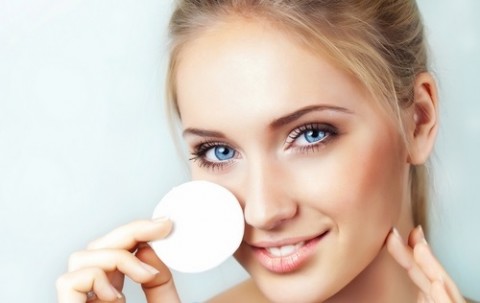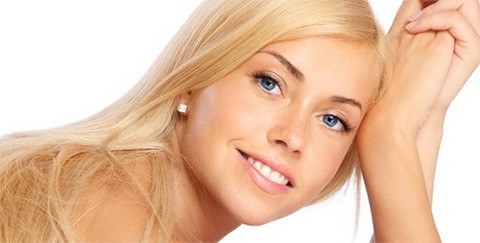Acne & Pimples: Causes, Types, Home Remedies & Myths

Article Contents:
What Is a Pimple?
Every human being, at some point in their lifetime, has gone through the stage of getting pimples. Pimples can be frustrating, and an irritating social stigma. Pimples also can be an emotional blackmailer, one you think you can never overcome. Everyone can relate to someone’s experience of this so-called ‘pimple phase’. This brings us to question, what is a clear definition or explanation of the word ‘pimple’?
A pimple can be defined as a small pustules or papule resulting from inflammation of the sebaceous gland. It happens due to bacteria, the sebaceous gland swells up above the skin’s surface, and the pus accumulates around it. The medical term is acne or acne vulgaris.
Sebaceous glands are found only in mammalian skin. These glands produce a unique mixture of fats, called sebum, which prevent over drying the skin, making it supple, protecting the body against various bacteria and infections, as well as taking part in a complex system of thermoregulation of the skin.
Sebaceous secretions may be increased by raising the level of male sex hormones (androgens), and reduced under the influence of female sex ones (estrogens).
Pimples, blackheads, acne, whatever we call it, known by doctors as acne vulgaris, is one of the most common skin diseases. In fact, 85% of adolescents face this problem. Acne develops in boys as well as girls. The peak incidence occurs between the ages of 12 to 24 years, and the disease itself is characterized by a prolonged bout with frequent exacerbations and relapses. Clinical manifestations of acne may persist for up to 35-40 years of age, often leading to disfigurement, the formation of persistent disfiguring scars, causing substantial emotional distress.
Everyone knows what pimples look like. They are polymorphic eruptions consisting of papules, pustules, nodules, cysts, and pathological opened and closed comedones on oily skin. But sometimes (if not treated properly), acne can cause complications, by spreading to the back, chest, and face and forming areas of bright – red and bluish colored skin, deep into the skin. Nodes can reach 1.5-2 cm in diameter, and are extremely painful. Merged nodes form conglomerates, and inflammation can occur, which remains after the opening of non-healing ulcers, and subsequently – severe scarring. To avoid these complications, the treatment of acne should be done correctly and comprehensively.
Causes of Acne
- Occlusion of the pilosebaceous orifice
The pilosebaceous orifice can be occluded by a keratinous plug caused by chemicals in cosmetics, or due to the reduction of linoleic acid in the sebum of the patient. This results in retention of the sebum, which then leads to microbial growth and inflammation. The rupture of follicles releases pro-inflammatory cytokines causing intense inflammation.
- Hormonal imbalance
Sebaceous secretions are controlled by androgens. In males with acne, we can see that the androgen levels are normal, but, the sensitivity of the sebaceous glands is high. This can be due to increased activity of 5α-reductase, which converts testosterone to a more potent version, which binds to the sebaceous gland and increases its sebum production and secretion.
Even in women, the same kind of situation is observed. But, the androgen/estrogen ratio can be increased in these women more than normal.
- Microbial colonization
There are three main types of bacteria that cause acne, and they are Propionibacterium acnes, Malassezia furfur, and Staph epidermis. These organisms trigger inflammation in the follicles by secreting extracellular enzymes. The inflammation is widespread, and many eruptions are typically located in the area. The rupture of follicles will release more inflammatory cytokines leading to more inflammation.
- Increased sebum secretion due to other external factors such as dietary, hot climate, sweating, and etc.
- Genetics – Many kinds of research suggest that there are possibilities that genetics plays a vast role in acne vulgaris. Acne vulgaris is mostly present in children whose parents had acne in their youth.
- Pregnancy – During the first 3 months of pregnancy, the total system readjusts to the baby, and thus the sebaceous glands also produce excessive sebum, which can result in pimple.
- Medications – There are some medications that can cause acne
- Excessive sunlight
Different Types of Acne
Knowing the types and levels of acne will help you to find the most specific and effective treatment. It will also help you to determine whether you can treat it at home or need to visit a dermatologist.
There are following types of acne:
Type 1: This is the mildest form of acne. There will be minor pimples. They will be small in size and may be present together with blackheads and milia. But, there won’t be any inflammation. This acne is seen in adolescence and is typically found on the nose and forehead. When adults are suffering from this type, it presents as blackheads on the forehead and nose. Milia will be present in the eye area and chin.
This acne can be treated easily at home with products containing salicylic acid. The type 1 acne which is left untreated can pass into level two.
Type 2: This is the moderate form of acne. Blackheads and milia are present in greater numbers than in level 1. There will also be more papules and pustules. The eruption of papules and pustules and inflammation can be seen. In teens acne will be spread mostly in the areas of the face, but may spread to the back and shoulders as well in lesser amounts.
Level II acne can also be treated at home, using salicylic acid together with a benzoyl peroxide lotion every day, which will help to help kill the bacteria that causes inflamed breakouts. However, if after several weeks of home treatment, your acne does not significantly improve, it is time to see a dermatologist. Level 2 acne may progress to level 3 if pimples are squeezed or picked.
Type 3: This is a severe form of acne. The amount of inflammation present is higher than in level 2. Other than papules and pustules, nodules will also be present. This involves areas of the neck, chest, shoulders, upper back, and face. The chance of scarring becomes higher. You should see a dermatologist, and the treatment will be a combination of topical and systemic therapies.
Type 4: This is the most severe form of acne, and is referred to as ‘nodulocystic’ or ‘cystic acne’. Other than papules, pustules, and nodules, cysts also will be present. These polymorphic patches will cover a wide area of the body, such as the face, neck, shoulders, back, and even hands. This form of acne is painful, and is characterized by severe inflammation and eruptions. Most of this acne will develop scarring.
Acne of this grade needs powerful systemic therapy together with topical treatment.
In addition, there are other types of acne too, they are listed below:
Acne Conglobata
This is a severe form of acne characterized by intercommunicating pustules, nodules, and cysts packed with serosanguinous fluid or pus. There will be a lot of comedones with have several openings. Lesions take months to heal, and when healing leaving a hypertrophic scar. Lesions are severe and may lead to follicular occlusion syndrome.
Occupational Acne
This is caused by exposure to different chemicals such as tar, chlorinated hydrocarbons, and etc. in the work environment. The primary lesion in this condition has many comedones, but sometimes even cysts can be seen. It can be determined by its specific locations where the patients come into contact with the chemicals.
Cosmetic Acne
These eruptions are always comedones after using oil based cosmetics. These lesions will be located mostly in the chin area. Make sure that you apply a good moisturizer and opt for non-comedonic cosmetics to lessen the production of blackheads that can lead to pimples when ignored.
Drug Induced Acne
Acne eruptions may occur due to different drugs such as steroids, androgens, some contraceptives, anabolic steroids, antitubercular drugs, iodides, bromides, and anticonvulsants. Lesions in this condition are monomorphic. Papules, pustules, or comedones will be present. But, they are located in a wide spread area.
Infantile Acne
This is due to the presence of maternal hormones in the child. It is more common in boys. Lesions are similar to the ones in adolescence. May present at birth and can last for up to three years.
Acne Excoriee
This type of acne is due to the habitual pricking of mild acne and is more common among girls. Pricking at pimples may lead to excoriations there are typically only a few lesions.
Acne Fulminans
This variant of acne has an acute onset and is associated with fever, myalgia, and arthralgia. The lesions are presented as crusts and ulcerations together with nodules, pustules, and papules.
Acne after a Facial Massage
Facial massages may lead to the eruption of acne in many people. The lesions may appear1-3 weeks from the day of the facial massage. The lesions may erupt as deep seated nodules with very few comedones in the cheeks, chin, and jaw. They heal leaving hyperpigmentations.
Home Remedies for Pimples

There are a wide variety of treatments for pimples, but home remedies are what people choose to take as the first treatment for their acne. All people believe that home remedies are mostly natural and with mild to no side effects. However, there are some exceptions, we tend to use nonherbal products for home remedies for acne. The eight most widely used home remedies are listed and explained below to provide in-depth knowledge about these remedies, together with clear instructions about the procedures for excellent outcomes.
Lemon
Lemon juice contains a very high amount of antioxidants due to its enormous supply of vitamin C. Lemon juice helps dry up pimples. Further, it reduces the irritation around the pimples and decreases the inflammation. There are many ways to use lemon juice as a home remedy for pimples. The best ways are:
- Dip a small cotton ball in fresh lemon juice, lightly squeeze out the excess juice, and then apply to the pimple or affected area. The best time to follow this procedure is before going to bed.
- Another method is to combine 1 tablespoon of freshly squeezed lemon juice, and 1 teaspoon of cinnamon powder, and then mix to make a semi-liquid paste. Apply this mixture before bed, leave on overnight, and then wash your face in the morning with warm water. Repeat these steps every day.
Ice
It might be surprising to see ice in this home remedies section for pimples, but the truth is that the ice cubes can do magic when it comes to getting rid of pimples. Ice cubes reduce the hyperemia, inflammation, and swelling around the pimples. Furthermore, the ice cubes tend to increase blood circulation to the affected area. This also causes tightening of the skin’s pores, which helps in the removal of debris and oil from the skin, and it naturally cleanses your skin. But, you need to know the right technique to perform this magic. Let’s look at how it’s done:
- Take a clean cloth and wrap two or three ice cubes in it. Apply this ice pouch to the affected area for 2-3 minutes, and then remove it. Repeat this procedure after 10 min, and then repeat the whole process several times.
Tea Tree Oil
Another important gift of nature is tea tree oil. The benefits of this oil are immense and intense. There should be proper care taken when using tea tree oil. Tea tree oil is full of antibacterial properties. This oil also reduces the hyperemia and inflammation around a pimple. In addition, tea tree oil can dry up blackheads and whiteheads.
Tea tree oil is slightly corrosive in nature. Therefore, care should be taken when using this product. It is important to follow this procedure, which adds another ingredient too.
- Combine 1 tablespoon of aloe vera gel and a few drops of tea tree oil. Mix it thoroughly to make a smooth gel. Apply this gel and leave on for about 20 minutes. After the 20 minutes, wash off the gel with clean water.
Toothpaste
You may not believe what I am about to say, but it is absolutely true. Toothpaste not only effectively removes the bacteria from your teeth, but it can remove pimples too. However, the type of toothpaste should be white paste, not gel. There should be proper care taken when applying the toothpaste.
- Apply a small amount of white toothpaste over the affected area, the best time to apply this is before you go to sleep. Then simply wash off in the morning.
Papaya Fruit
We are all familiar with the orange and fleshy fruit – called papaya. But how many of us know the secret about papaya? I bet only a few have heard about the connection between the fruit and its pimple eliminating properties. The fruit is a good source of vitamin A, and the enzymes in the papaya decrease inflammation. In addition, papaya can reduce the amount of oil secreted by the skin.
- Take papaya juice, apply on the pimple or affected area, leave for 10-15 min, and wash it off thoroughly with water.
Cucumber
- The cucumber is not just a vegetable with a lot of water content, the green cucumber is filled with a vast variety of vitamins. The vitamins give our body many benefits. Among them, surprisingly, the cucumber has pimple eliminating properties . A cucumber really works to treat pimples. The nutrients in cucumbers are potassium, Vitamin A, Vitamin C, and Vitamin E. Here is a helpful pimple remedy to try:Cut 2 cucumbers into pieces and soak them in water for 1-2 hours. Then drink ½ of the cucumber infused water, and use the rest to wash your face or any other pimple-affected areas. The chlorophyll, in the cucumbers, does most of the magic.
- Try a cucumber pack. Grind a cucumber, apply it to the pimple-affected area, and wait for 15 min. Wash with warm water, so that the debris and oil are cleaned out from your pores.
Honey
Honey is highly beneficial for many health conditions. It is also beneficial for acne. Honey possesses natural antibiotic properties. It also speeds up the healing process.
- Dip cotton balls in honey, squeeze out the excess, and apply it to the affected area for about 30 minutes. Then, wash with warm water, which removes the debris and oil.
Steam
Steaming is the process of using steam to treat pimples. The steam opens up the pores of the skin and removes the debris and bacteria. Hence, the oil, debris, and the dead cells are removed. After this process, wash the face with lukewarm water.
Apple Cider Vinegar
Apple cider vinegar is a skin toner and keeps our skin very healthy. In addition, it balances the pH of the skin and eliminates impurities and microorganisms. The application of diluted apple cider vinegar helps you to get rid of pimples very quickly.
- Take a small cotton ball, dip in diluted apple cider vinegar, rub it on the face, and leave it on for 20 minutes or even 35 minutes. After this, wash the face with cool water and apply a moisturizer.
Major Myths about Pimples and Their Treatment
- Acne can only affect adolescents.
- Stress does not cause pimples.
- You should pop a pimple to get rid of them.
- Sunbathing can cure your acne.
- What you eat is not important when it comes to pimples.
- Costlier products are the best products.
- Blackheads are the result of dead cells on your skin.
- Moisturizers are the major cause of pimples.
When to Seek the Attention of a Dermatologist
There are possible instances where these home remedies will not be enough to eliminate pimples. In such instances, it is a good idea to consult a dermatologist. There are some people who suffer from severe body acne, which is much harder to treat with home remedies alone. Those patients need the treatment and guidance of a dermatologist.
In addition, people who have pimples all over their body, especially if they are severe on the face should, seek treatment from a dermatologist. Moreover, if there are any complications, you should seek the attention of a dermatologist. The major complication of the acne vulgaris is scarring.
Prevention of Acne: Do’s & Don’ts
What you should know about this topic is presented in the table below.
| Do’s | Don’ts |
|
|
|
|
|
|
|
|
|
|
|
|
|
|
|
|
|
|
Conclusion
To sum it up, pimples are not the end of the world. However, many people are embarrassed or frustrated about pimples, but this article is a helpful guide about what you should and should not do to treat pimples, when to seek medical attention, and what you can use to treat them at home.
References
http://www.sciencedirect.com/science/article/pii/S0022202X15301019
http://www.karger.com/Article/Abstract/67819
http://link.springer.com/chapter/10.1007/978-3-540-69375-8_14
http://www.ijsit.com/admin/ijsit_files/ANTIBACTERIAL%20ACTIVITY%20OF%20Citrus%20limon%20ON%20Acne%20vulgaris%20(PIMPLES)_IJSIT_2.5.7.pdf
